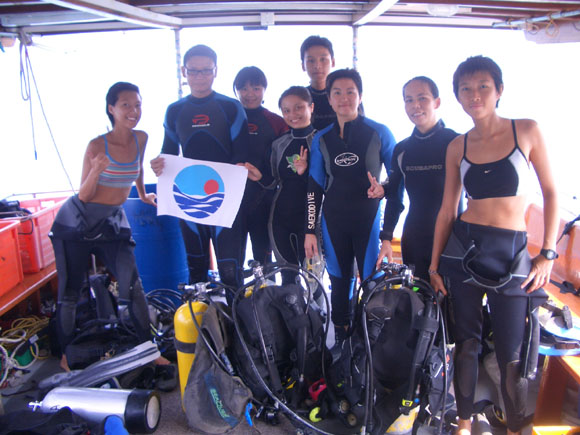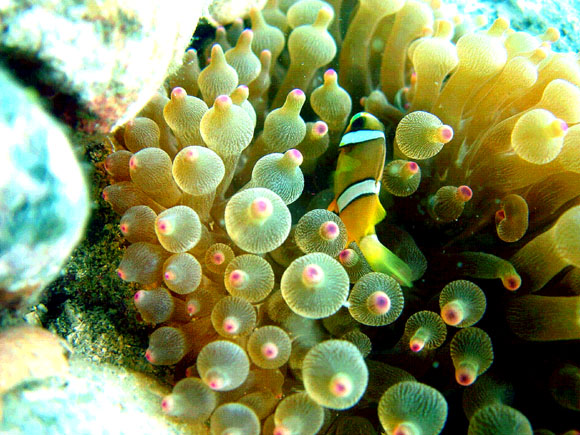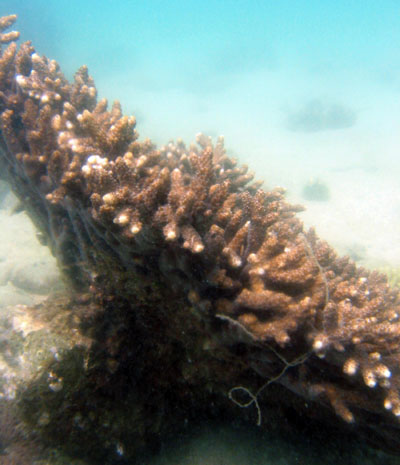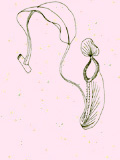
 |
 |
Miscellany (pdf)
|
Kadoorie Farm & Botanical Garden - wildlife updates & sightings |
Big Fish Count 2005(pdf)
by Ng Wai Chuen and Priscilla Leung
The Big Fish Count 2005, organized by WWF Hong Kong, was held on a sunny, calm Sunday on 2 October. This was the second year of the annual fund-raising event which aims to arouse public awareness about marine life and conservation. The data collected could also contribute to database establishment and better understanding of local fish communities and associated environment. This year, the participating teams increased from 4 to 10 compared to last year. The SWIMS formed a six-diver-team which included Anna Situ, who previously participated in the Big Fish Count 2004, Valerie Ho, Wallace Choi, Liu Min, Priscilla Leung and Ng Wai Chuen; the team was also supported by Wai Tak Cheung, Jasmine Ng and Karen Lui. With the full support of Dr Gray Williams, the Director of the SWIMS, and organization by Dr Kenneth Leung, our team got everything set and ready to dive (Fig. 1).
 |
|
Fig. 1. The SWIMS diving team for Big Fish Count 2005; from the left, Karen Lui, Ng Wai Chuen, Priscilla Leung, Anna Situ, Wallace Choi, Valerie Ho, Liu Min and Jasmine Ng (Photo: Wai Tak Cheung). |
Within the ‘game’ period of 8 hours, each team could choose 3 sites for their fish counts, and each diving pair could do a 45-minute dive at each site to witness and record as many species as possible. We chose Ung Kong Wan at Bluff Island as our first survey site; the bay contains mainly sandy substrate with a band of rich coral at the north side and rocky reef at the northwest outcrop. In order to record a wider range of fish species, our three diving pairs decided to swim along separate routes to cover different habitats; coral, soft substratum and rocky reef. After jumping into the sea, we knew that it would be an enjoyable day, with nice visibility of 6 to 7 m, good water temperature and light penetration. We then went for our first reconnaissance and recorded 55 species within the 45 minute-dive. The site is occupied by locally common species, such as clown fish Amphiprion clarkii (Fig. 2), schools of Chinese demoiselle Neopomacentrus bankieri, bubblefin wrasse Halichoeres nigrescens and various cardinalfishes from the genus Apogon. We also encountered some rarer fishes like Racoon butterflyfish Chaetodon lunula, Eclipse puffer Takifugu ocellatus: Min and Valerie’s record of a Pearlscale butterflyfish, Chaetodon xanthurus, was the first record of this species within Hong Kong waters.
 |
|
Fig. 2. The clown fish Amphiprion clarkii at Ung Kong Wan (Photo: Ng Wai Chuen). |
Apart from the diverse fish fauna, the hard coral assemblage at Ung Kong Wan is one of the most diverse and abundant communities in the territory. However, it is also one of the most easily accessed sites for pleasure vessels from Sai Kung, and hence a hot spot for leisure diving and other water activities. Although a "no anchoring area" has been established to protect the hard coral (AFCD, 2005), its effectiveness is definitely not enough as colonies are suffering from breakage and unrooting (Fig. 3). The damage is probably caused by anchoring, poor diving practice and fishing activities. We believe Ung Kong Wan should receive greater protection to conserve the coral community and its associated flora and fauna.
The second station was set at Shelter Island, the site contains lower abundance of coral and larger areas of rocky and sandy substrata than Bluff Island. In this site, we encountered more sand-associated species including various gobies and lizardfishes, and shoaling species such as Yellowstripe scad Selaroides leptolepis and Barracuda Sphyraena sp. (Fig. 4). Some less common species like Threespot dascyllus Dascyllus trimaculatus and Honeycomb filefish Cantherhines pardalis were also observed. At the end of the dive, our team counted 64 species in this site.
After two dives, we took a quick rest to recover our cold, dry and tired bodies before the more intense third one. For the last site, we wanted to survey a deeper rock reef to get a better score on deeper water species, and so we decided to dive at Lak Lei Tsai. This is a site comprising three rock piles with a steep slope running down to 12 m. The rocky walls, colonies of short-spine and long-spine sea urchins were seen everywhere. At the bottom there was a garden of sea anemones occupied by groups of clownfish. We recorded fewer coral-associated species, but more rocky reef species, like Spottedtail morwong Cheiladactylus zonatus and Largenose boxfish Ostracion rhinorhynchos. Finally, we finished this station with a record of 51 species.
 |
|
Fig. 3. Unrooted coral colony (Acropora sp.) at Ung Kong Wan (Photo: Ng Wai Chuen). |
Although exhausted, the whole game period was very enjoyable, and we were excited that we had seen see so many species in one day. The final score of the SWIMS team was 92 non-overlapping species, are 2 species higher than our record last year. The luckier team was CUHK team who completed the game with 96 species, and they also recorded an Axilspot hogfish Bodianus axillaris which has not been reported in local waters before. Integrating the data from all teams, a total of 173 species were identified in the Big Fish Count. It is an impressive figure to remind us that our sea still supports diverse fish assemblages (Sadovy & Cornish 2000). On the other hand, we must be alarmed that most of the fishes that we saw were either juveniles, or small, non-commercial, species which are escapees from the over-crowded and too-small-mesh-sized fishing activities. We believe that these surviving fish communities cannot recover or sustain themselves without long-term, effective, measures that address unregulated fishing operations.
Finally, we hope this event will continue year by year to raise public awareness about marine conservation, to keep breaking species records, and to maintain its title as "Big Fish Count" instead of having to change it to "Small Fish Count" or "Fry Fish Count".
 |
|
Fig. 4. Barracuda Sphyraena sp. at Shelter Island (Photo: Ng Wai Chuen). |
Bibliography:
AFCD (Agriculture, Fisheries and Conservation Department) 2005. Conservation website <http://www.afcd.gov.hk/conservation/con_e.htm>
Sadovy, Y. & Cornish, A.S. (2000). Reef fishes of Hong Kong. Hong Kong University Press, Hong Kong.
More information about the Big Fish Count is available at [http://www.wwf.org.hk].
| P.11-12 |
|
Porcupine! |
 Copyright © 2000 |
